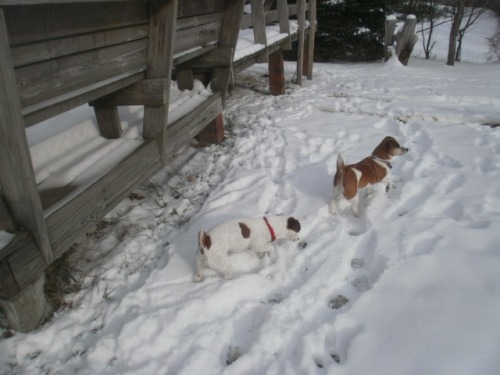
Arctic foxes were introduced to the Aleutians where they waged war on the seabird population, such as this poor least auklet.
I am a speciesist. Yep. I accept the title. I do believe some individual animals of certain species do have certain privileges that others don’t.
Owned domestic dogs should be treated as individuals, as should anything else kept as an actual companion animal.
Individual animals that must be culled through hunting seasons, like white-tailed deer, get no individual consideration. What matters about those species is carrying capacity as determined by wildlife managers.
Invasive species anywhere should receive even fewer protections than the game species.
That’s because as a conservationist, I value biodiversity over individual animals.
So I really don’t care that conservationists have trapped and killed introduced arctic foxes in the Aleutians, feral cats in the islands of the Sea of Cortés, or red foxes in Australia.
I don’t care about the individual deer that are shot every year in the United States. I care much more about what they are doing to temperate forest ecosystems. They exist in a world without predators, predators that will never be reintroduced in significant numbers, and it is vital that humans manage their populations.
I don’t think an absolute moral system can be applied to all animals. Indeed, I have issues with the concept of an absolute morality period.
I know, though, that we are but one chain of biodiversity on the planet. And it is out of this chain that we somehow became the dominant species on the planet. As the dominant species, we like to think we’re above all other species, when we’re just the ones at the top right now.
I don’t think every invasive or introduced species is a negative on the ecosystem. Ring-necked pheasants are mostly banal where they have been introduced. In North America, common carp are generally not an invasive species either.
But many things that have been introduced clearly are.
Especially on islands.
New Zealand had rabbits that were introduced, which ate down much of the good sheep grazing. Then stoats, weasel, and polecat-ferret hybrids were released to control the rabbits, and the mustelids wreaked havoc upon the ground-nesting bird population. New Zealand is a place full of unique ground-nesting birds, and it was once fuller of those species before the weasel horde hit its shores.
Therefore, to protect things like the kakapo, a massive ground-nesting parrot, it is necessary to kill these predators.
Animal rights ideology, which posits an absolute set of rights for individual animals, cannot allow for this killing.
So this ideology would rather have all the kakapo and native New Zealand birds go extinct, just because this ideology doesn’t want to see a guild of invasive predators killed off.
And I must say that I have to reject this ideology, because it clashes with my aesthetic, which requires us to maintain biodiversity as much as possible.
That’s because I know fully well that in a hundred years, that biodiversity will be reduced. Habitat loss, poaching, pollution, climate change, and invasive species will take their toll on a whole host of species.
And the diversity of life from which we descend will be reduced because of us.
Therefore we must kill invasive species to protect as much of life as we can. It is this paradox that many people cannot understand, but failure to understand this concept is ultimately going to add to the many species that will go extinct.
But in the end, animal rights ideology and conservation are not the same thing. Hunters who oppose animal rights ideology should stop conflating the two systems of thought. Animal rights ideology has no room for hunters, but true conservationists, who want to protect wild places from rampant development, believe hunters are part of the solution.
And virtually everyone is a speciesist. I am one, and it is only a small minority who try to hold absolute values when it comes to animals.
We have these inconsistencies, but they are not without reason. And although most mammals are very much like your own pet dog, they don’t act in the ecosystem in the same way. Transferring one’s feelings about a pet dog onto a mongoose in Hawaii is not wise– that is, if you care about nene. If you don’t care about biodiversity, then go ahead.
But don’t pretend that these two concepts are consistent. They are not.
And they are very much in conflict with each other.











